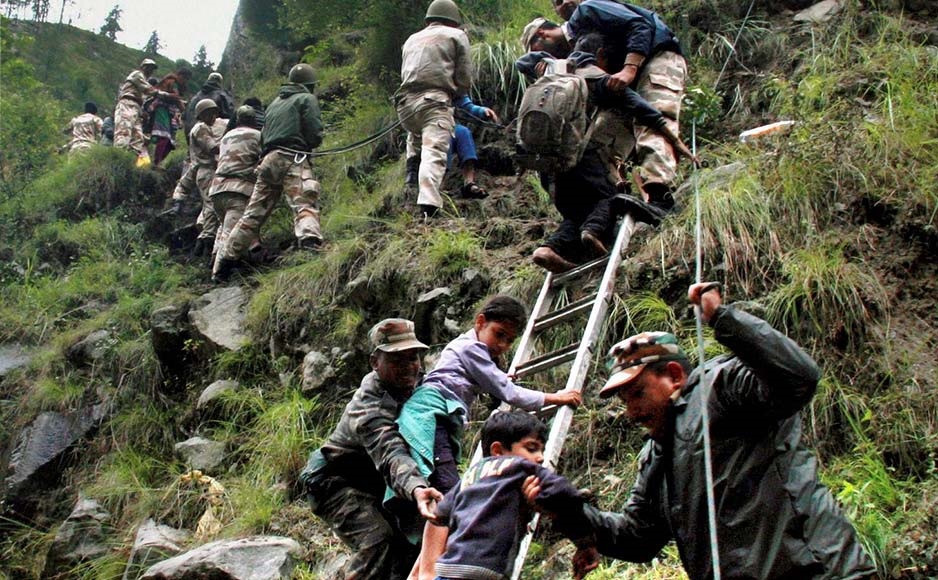Disasters bring with them a serious dismantling in the functioning of the community and a whole social life which involves widespread human habitats, animals, material, economic and environmental losses. There is no way forward without accepting the fact that disasters cannot be prevent fully, but the impacts they leave on the lives being affected on life and capital can be mitigated. The most vulnerable to these disasters are the impoverished communities. Therefore, it is essential to mobilize all the channels to keep the system going.
For the past couple of decades Pakistan, a country heavily enriched with natural resources has also been facing recurring natural disasters. Unfortunately, Pakistan has not been able to cope with them due to several reasons efficiently. Some of those are lack of resources for such emergencies and the absence of coherent policy formulation and implementation and delay in legislation. This can be denoted from the fact that Pakistan did not learn much from the earthquake of 2005 and floods of 2010 and allocated Rs. 363 million to National Disaster Management Authority (NDMA), the main body which deals with disasters across the country.
Pakistani authorities rush to response and recovery. However, they fail to devise a long-term strategy to counter this daunting challenge. Similarly, the lack of an effective institutional structure and the centralized power dynamics are equal contributors in this regard. Sadly, the issue of centralization is prevalent in almost all institutions. Global disaster policy frameworks promote decentralization as a prerequisite of a good disaster management strategy.
Various steps can be taken to manage these disasters in the future successfully. Increasing the budget spending for emergency planning and formulating agile and coherent public policy are among the foremost factors that can prove fruitful in disaster management. Empiricism is always a good idea. By learning from past experiences, Pakistan needs to devise comprehensive and well-defined policy measures to mitigate disasters impacts in the future. Not to forget that budget allocation is a critical component of policy devising. Therefore, sufficient grants are required to meet the needs of disaster risk aversion.
Similarly, developing resource-based capacity at the community level and focusing on long term planning for prevention and capacity building can also help in this regard. Local communities know their social settings better than any outside agency. Therefore, the focus needs to be on their capacity building so that they are able to deal with any future disasters effectively.
Public-private partnership is the new norm in most of the developing nations. This model needs to be replicated in Pakistan as well because it can address the financial constraints that the government is facing. Similarly, Non-governmental organizations working in the same area have well-trained professionals who are quick to respond and increase the system’s efficiency. Therefore, effectively, a collective approach needs to be taken.
World Bank alongside my non-government organizations are the main projectionists who stand out in helping Pakistan with risk management programs and consultations. Initially, the Bank provided technical assistance to the government to highlight physical and fiscal risks from hazards. Since the 2005 Pakistan earthquake, which led to nearly 73,000 deaths, left many in dire cosmos and caused damages to over 570,000 houses, the World Bank has been supporting the Government of Pakistan to shift from a response based to a more proactive risk management approach.
The urgency and importance to address Disaster Risk Management (DRM) holistically was further highlighted in the aftermath of the unprecedented 2010 floods, which affected over 20 million people and almost 20% of the total landmass of the country. This included undertaking risk assessments for federal and provincial capitals, as well as a national-level fiscal disaster risk assessment report. In parallel, the Bank also used grant resources to build the capacity of Provincial Disaster Management Authority Baluchistan, through the Baluchistan Disaster Management Fund (BDMF).
In 2016, the Bank also prepared and delivered the $120 million IDA-funded Sindh Resilience Project to mitigate flood and drought risks in selected areas, and strengthen Government of Sindh’s capacity to manage natural disasters. The Bank also continues to provide technical assistance to the government on the design of a potential hydro-meteorological operation aimed to improve early warning, weather, climate and hydrological information in the country.
Disaster and Climate resilient improvement projects:
The US$ 125 million IDA-funded project aims to support restoration of flood protection infrastructure and strengthen government capacity to manage disasters and climate variability. Direct beneficiaries of the project include the population of Punjab and the State affected by the 2014 floods and exposed to recurrent flooding in Chenab, Jehlum and Indus rivers, where flood protection infrastructure will be restored to resilient standards.
Sindh Resilient Project:
The US$ 120 million IDA-funded project focuses on improving institutional capacities, performance, and preparedness at key agencies responsible for managing disaster risk in Sindh. The project will contribute towards enhancing resilience to hydro-meteorological disasters including floods and drought through physical infrastructure investments.
Baluchistan Disaster Management Project:
The US$ 5 million project was financed through the Multi-donor Trust Fund for Khyber Pakhtunkhwa (KPK), FATA and Baluchistan. The project’s objective was to increase the Provincial Disaster Management Authority of Baluchistan’s capacity to prepare for and response to disasters. The project involved institutional strengthening through development of systems, plans and operating procedures in addition to improving technical skills and knowledge. The project also supported the government in identifying multi-hazard risk to the provincial capital, Quetta.
Through funds provided by the EU-South Asia Capacity Building for Disaster Risk Management Program, and administered by the Global Facility for Disaster Reduction and Recovery (GFDRR), the Bank is providing technical assistance to the Government of Pakistan in the areas of serious effects on habitats and climate services improvement and building institutional capacities of disaster management authorities at the national and provincial levels.
Pakistan has huge potential to learn from The World Bank and the developed countries in this particular department to cope the disaster. Pakistan can learn about the Local Government Alliance (LGA) for Disaster Risk Reduction and adopt a similar strategy. No doubt, this is a humongous task. But with a comprehensive and multilateral approach, Pakistani authorities can accomplish this feat of successfully mitigating the impacts of disasters and saving billions of rupees that we would lose otherwise.

Author is doing BS in International Relation from Lahore College for Women University. She is a freelance writer. Previously worked with The Frontier Post, Dawn and Express Tribune.
